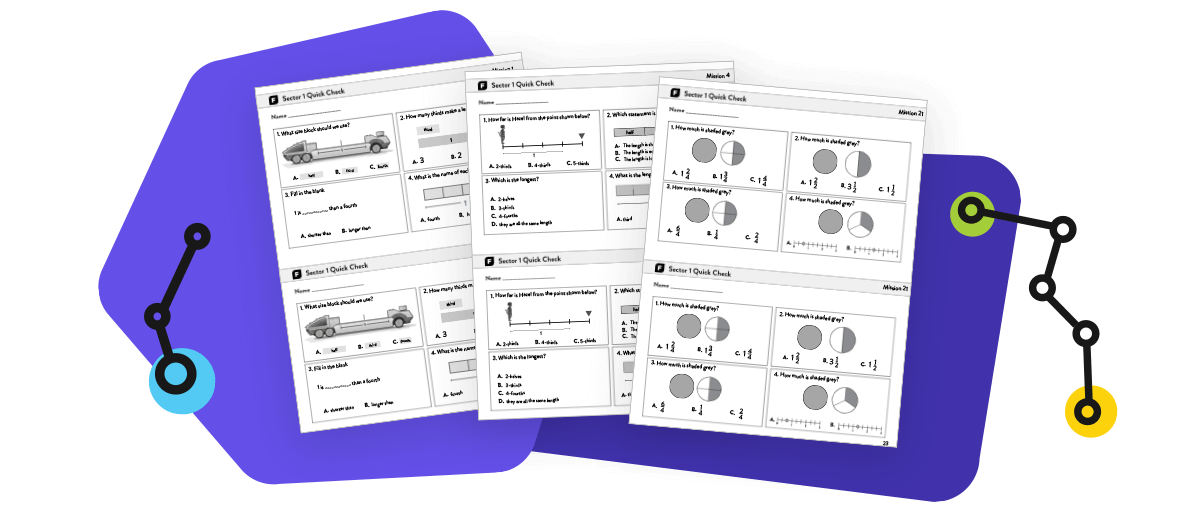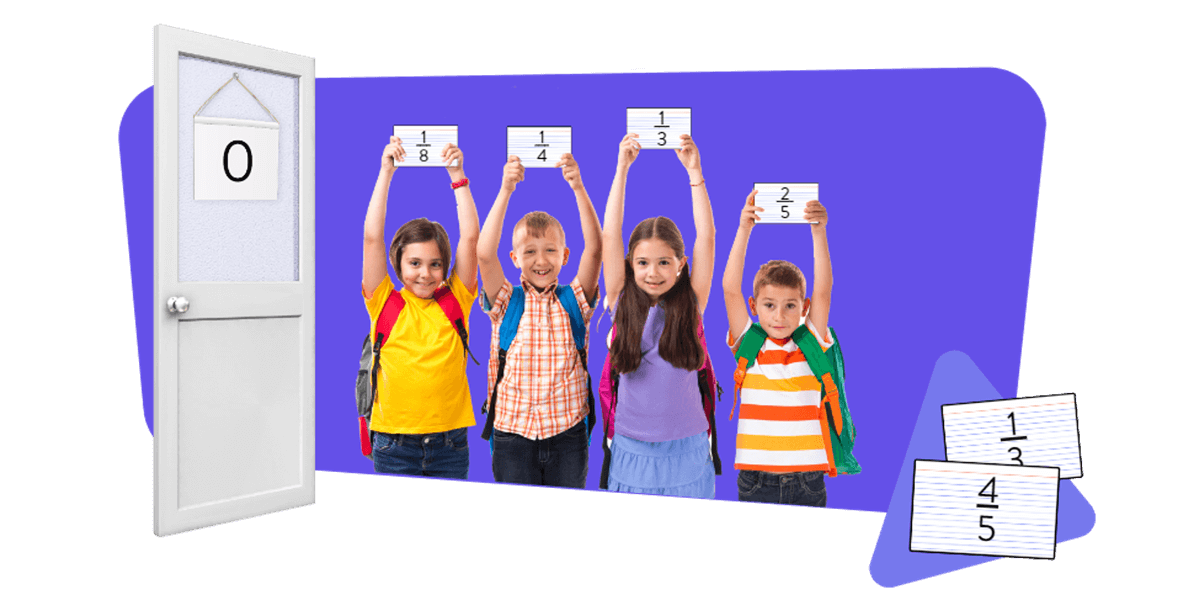5 Tips to Achieve More with Less Time Using Frax Resources

Teaching fractions is hard. Getting students to master fractions is even harder. During a school day, there's limited time for math instruction. In a math block, you're expected to follow state standards, use approved materials, and address students' needs. However, it can be challenging with over 20 students and diverse needs.
Some students struggle with building fraction models, rewriting fractions, or comparing fractions, while others have difficulty reading fractions, understanding fraction magnitude (size), or writing fractions equivalent to one.
Imagine having more time and tools to support your students. Picture their excitement about fractions during and after school. Wouldn't that be amazing? But the reality is, it's tough to find extra time. How can we make the most of what we have? Check out these five opportunities to consider during the school day.
1. Fraction practice before school starts
Some students come to school early. Have task cards from a Captain's Checkpoint ready for them to choose from.
Task card tips:
- Ensure the cards are for Checkpoints students have already reached.
- Encourage students to work in pairs and use manipulatives to solve fraction problems visually.
- If you don't have fraction blocks, use printable Frax Fraction Blocks.
2. The first 10 minutes of the school day or math block
Start strong with a quick math review, even with limited time.

- Display a question from Frax Quick Checks (also found in the Teacher Guide)
- Have students solve the problem on individual whiteboards or in their math notebooks.
- Encourage students to share their thoughts with classmates.
- Close with a wrap-up class discussion about the different approaches and reasoning students used to solve.
3. During the math block
Build fraction knowledge during your designated math instructional time using small groups and stations.
Math Station Ideas:
- Station 1: Students use devices to work on Frax missions independently.
- Station 2: Students practice a skill they learned before.
- Station 3: Students work on a Captain's Checkpoint.
Tips for Success: Provide the Activity in print or digital format. Encourage group or partner work on the Captain's Checkpoint. Use leveled task cards to differentiate student needs.
Microlabs Protocol (See the NSRF Guidelines):
- Divide students into groups of four.
- Give each student a different Quick Check question from a Frax Mission.
- Students solve their own assigned questions.
- When finished, each student passes their paper to the student on their right.
- The next student checks for accuracy and provides feedback.
- Students continue passing the papers until all three students have checked and given feedback.
4. The last 10 minutes of the school day
The end of the school day goes by in a flash, but you can still incorporate math!
Before students pack up
- Use the Frax Mission Debrief Questions in the Teacher Guide. Be sure to select relevant questions. For example, if you're teaching about fractions on a number line, pick debrief questions from relevant Missions like Mission 10: Mining Memories.
- Have students partner up to discuss the questions and promote math talk.
- Encourage students to use the key language (found in the Teacher Notes section of each Mission in the Teacher Guide).
Lining students up
- Provide students with fractions written on an index card.
- Label the classroom door as 0, and label the end of the line as 1 to create a number line.
- Call out a few fractions at a time. Ask students with the matching index card to line up in the proper spot on the number line.
- Check the cards to make sure students are in the correct location in reference to the number line.
- Ask the class to discuss if they are in the correct place and explain why.

5. Practicing fractions after school hours
Keep the fractions practice going at home with Frax.

- Instruct students to replay old Frax missions to earn tokens for cabin decorations.
- Assign Quick Checks as homework assignments.
- Offer digital or printable Captain's Checkpoint task cards for extra practice.
Teaching fractions and ensuring student mastery can be tough but with different approaches and helpful tools like Frax online and offline materials, you can help your students experience confidence.
Check out the resources in the Captain's Checkpoints, Teacher Guide, and Quick Checks, specially created for you. Need more ideas? Extend after-school fractions practice with digital solutions!
Let's embrace these practical solutions and set the stage for their success in fractions and beyond.
About the Authors

Mangai Neelavannan, Learning Architect at ExploreLearning
Mangai Neelavannan, a Learning Architect at ExploreLearning, has over 15 years of experience in education. She taught math using differentiated instructional techniques and progressed to become an instructional coach at the district level. She provided resources and guidelines to teachers in elementary, middle, and high school settings while modeling lessons in the classroom. Her passion is helping students gain a conceptual understanding of fractions to set a strong foundation for academic success.

Emily Reichbach, host of Virtual Learning Communities
Emily Reichbach, the host of Virtual Learning Communities, is a former elementary school educator, District Teacher of the Year, and technology instructional coach. With a Master's in Instructional Technology, she harnessed the power of technology to help meet the needs of students. She works across ExploreLearning departments on resources to meet the needs of teachers and students, including the Frax Teacher Guide, Checkpoints, Quick Checks, and more.
